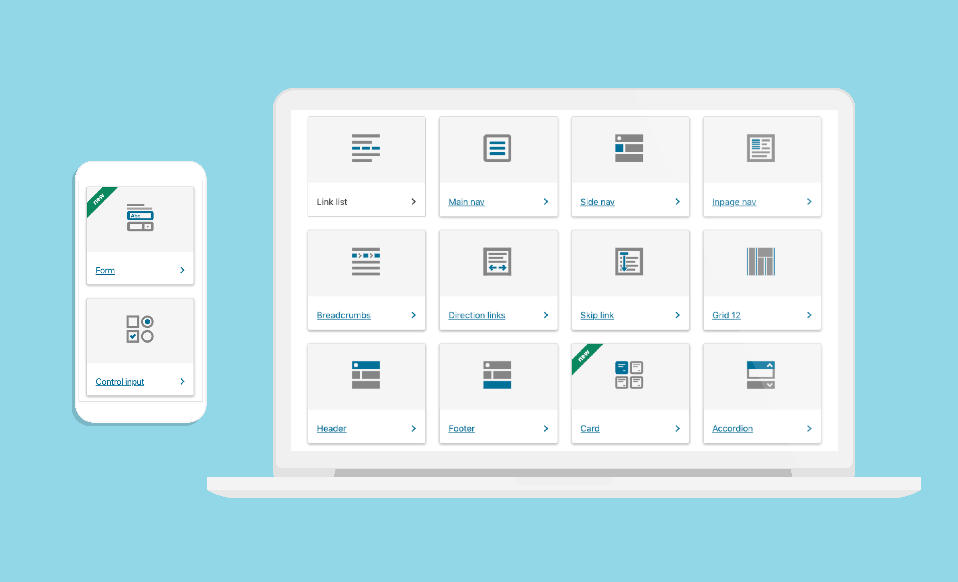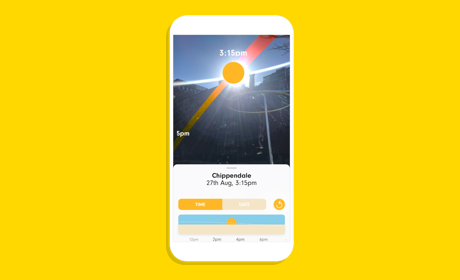Degree Chooser

The Challenge
For prospective students, deciding on a university degree can be challenging. A range of factors comes into play, from entry requirements, to aspirations for graduate jobs, to living arrangements, to university rankings. In Australia, there are more than 3,000 courses to consider.
In 2020, matters have been made even more uncertain by the COVID-19 pandemic. Students have been dealing with disrupted study patterns, a shrinking of the casual employment market and, on many campuses, the suspension of face-to-face teaching.
Further, the long-term impact of the pandemic on graduate jobs of the future remains to be seen. With so much of the workforce having migrated online, graduate jobs in Australia in 2025 might be very different to graduate jobs in Australia in 2020.
The decision-making process is made even more difficult by a lack of centralised data and data analytics. Most universities and university’s admission centres publish information about the degrees on offer; however, this information is often lengthy, detailed and scattered across multiple webpages. Comparing and contrasting degrees across institutions can be confusing and time-consuming.
Our Solution
In response to these challenges, we collaborated with Barlow Advisory, an independent think tank which, since 2007, has published the Barlow Report, a biennial report used by Australian universities to make strategic decisions about research.
The result was Degree Chooser, a bespoke data visualisation tool with an easy-to-navigate user design interface that allows students to compare and contrast degrees across Australian universities—within seconds.
Where Barlow Advisory provided the concept and proprietary data, we provided multiple iterations and refinement of the concept, as well as researching and sourcing of additional data. Together, we worked on both data analytics and product development.
Out of this collaborative approach emerged a wealth of data covering a variety of degrees offered at Australia’s most popular universities. This data covers three issues central to every student’s decision-making process:
- likely minimum, maximum and median ATAR required for admission;
- the university’s location; and
- the university’s position in three world-wide university rankings.
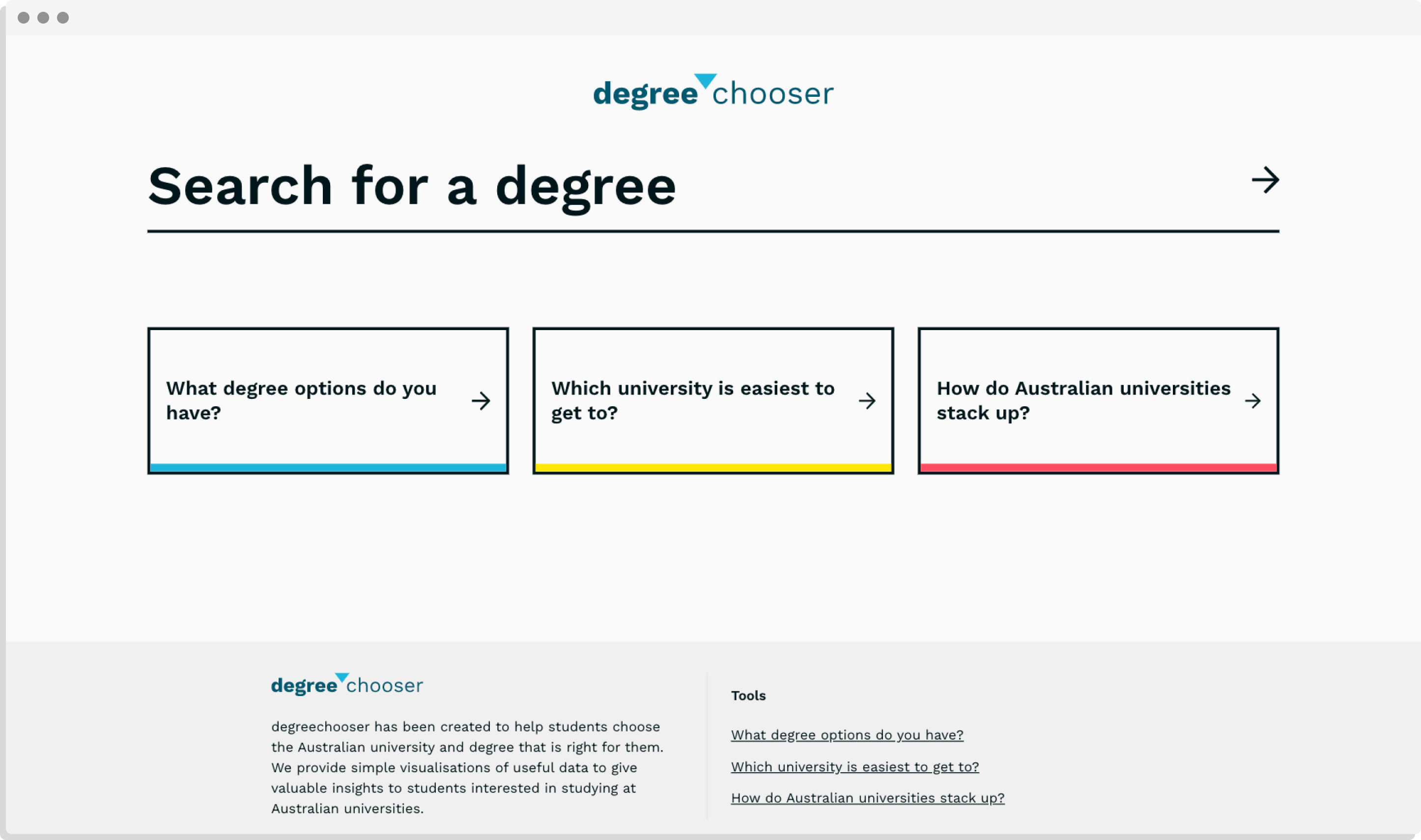
Choosing a degree by ATAR
The user experience begins with choosing an area of interest from more than 100 options, ranging from specific subjects, such as Aerospace Engineering, Biomedical Engineering and Interactive Design, to general ones, such as Arts, Science and International Studies.
Next, the user enters their ATAR (or expected ATAR). This generates a data visualisation of possible degrees, ranked according to likely ATAR required for admission—from highest to lowest. For every degree, the likely minimum, maximum and median ATAR are depicted, and the user’s ATAR is marked in relative position. This approach to data analytics enables the user to see, at a single glance, where they will likely gain a place, and where they likely will not.
For example, if a user chooses ‘Aerospace Engineering’, then a list of six universities that offer an Aerospace Engineering degree will be generated. If the user enters an ATAR of 79, the user will see that they are likely to gain a place at Queensland University of Technology, the University of Newcastle and RMIT University, but not at the University of New South Wales, Monash University or the University of Queensland.
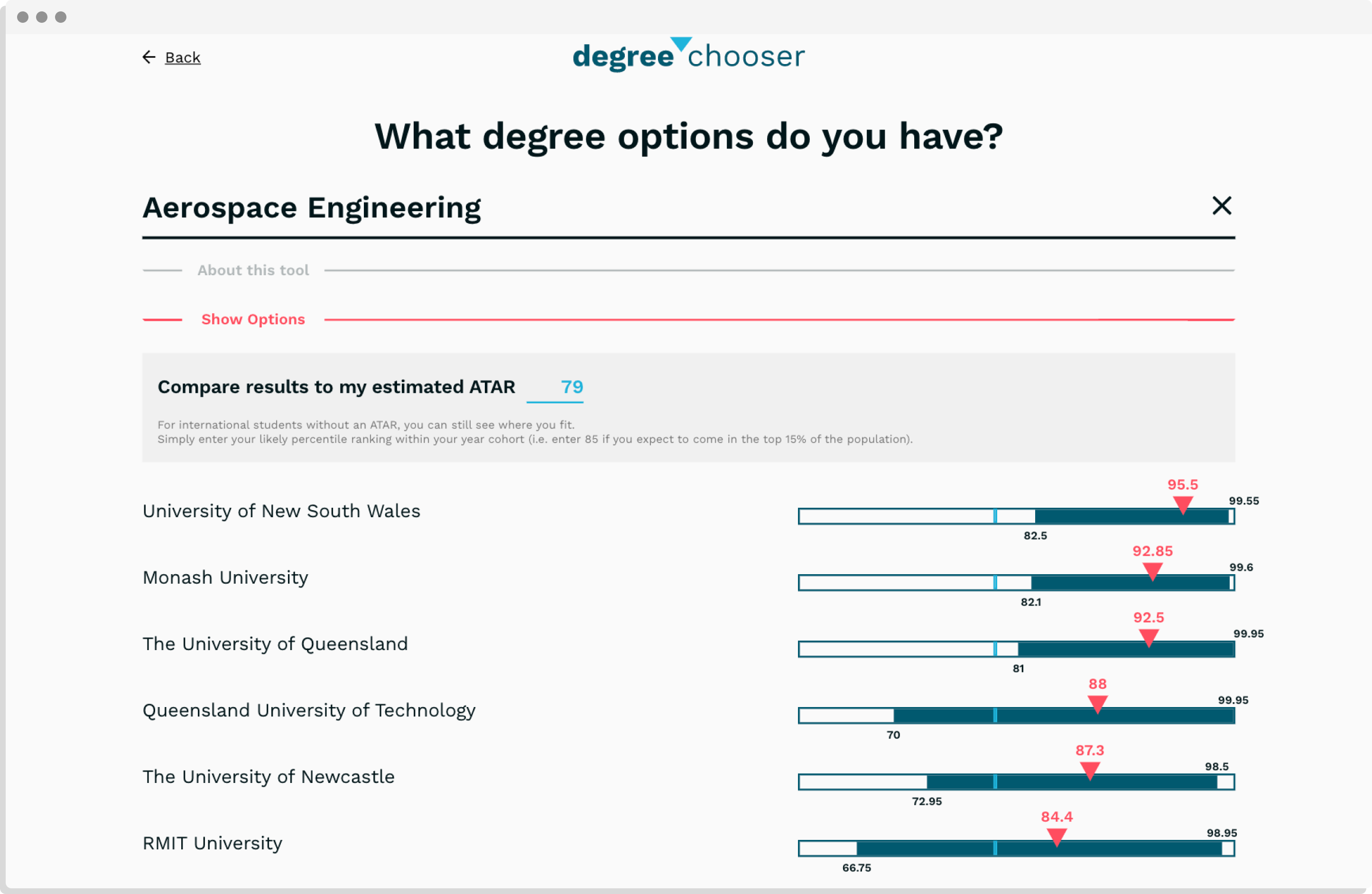
Alternatively, if a user interested in law graduate jobs enters ‘Law’, then a list of 34 universities that offer a Law degree will be generated, ranging from Victoria University, where the likely median ATAR for entry is 73.95, to the University of Melbourne, where the likely median ATAR for entry is 99.85. If a user enters an ATAR of 90, then they will see that they are likely to gain entry to 26 of the 34 options.
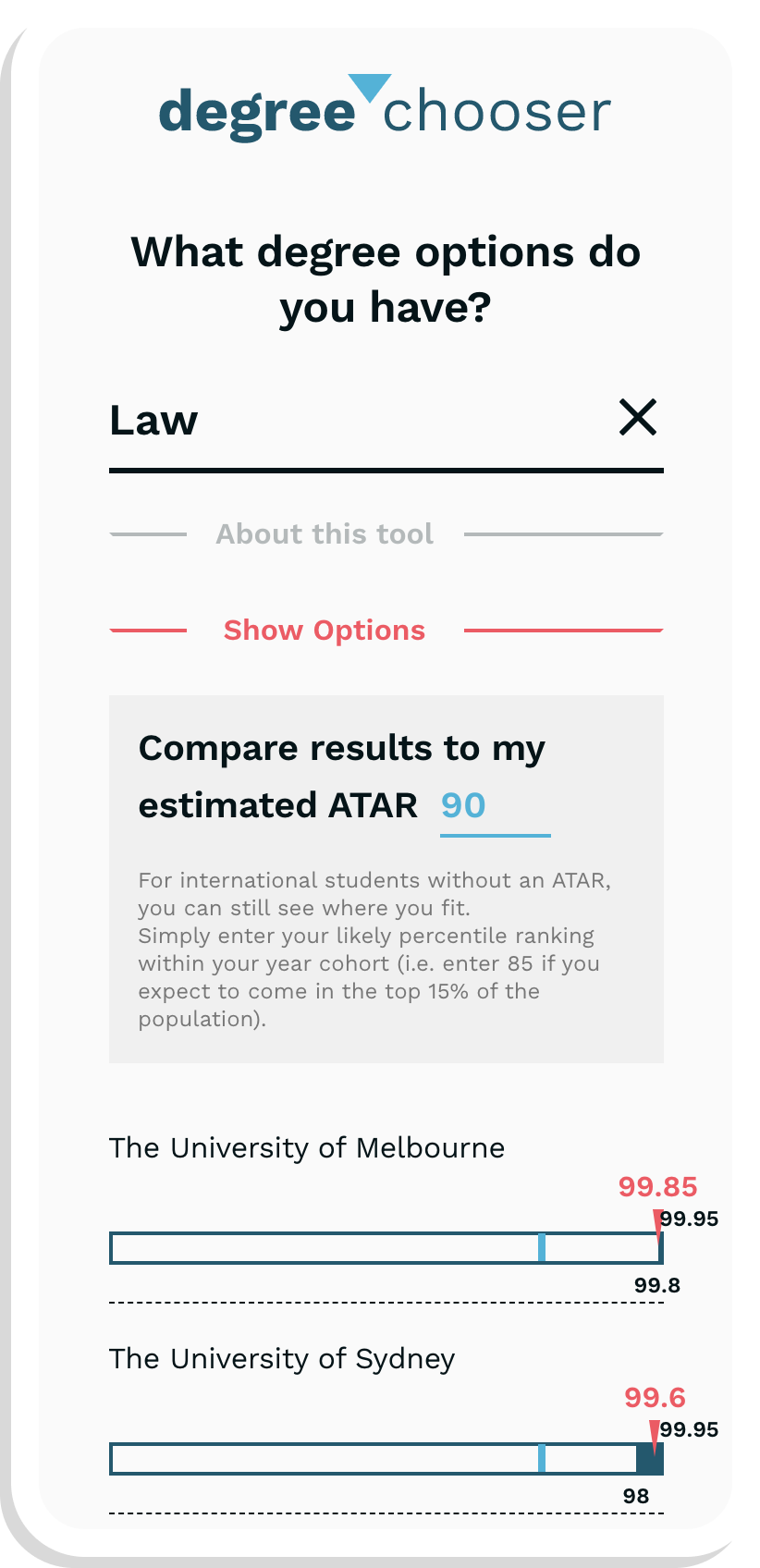
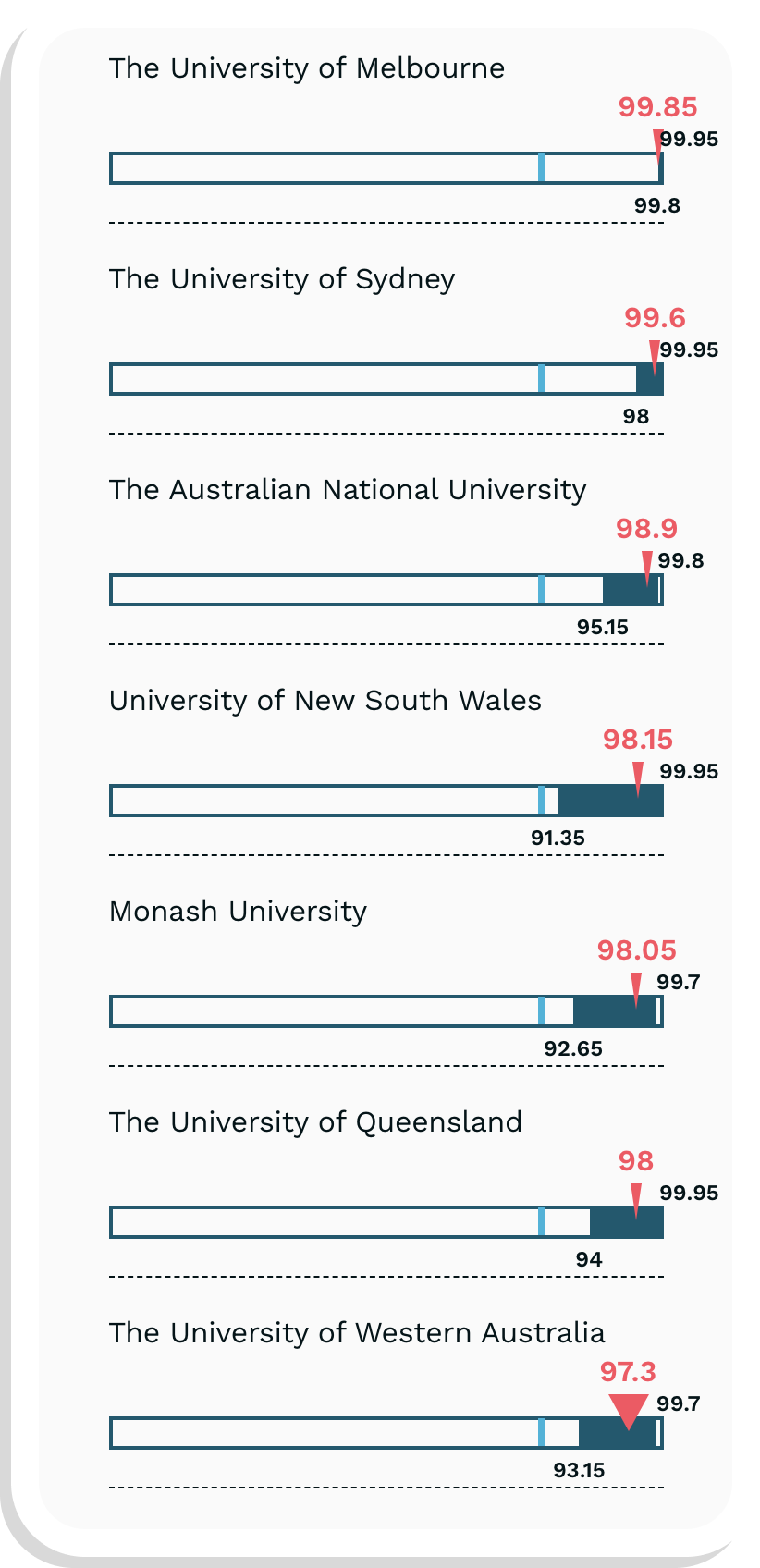
Further, the user can find out more about any degree listed, by clicking from the data visualisation through to the relevant page on the universities admission centre in their state—be it the Universities Admissions Centre (UAC) website in New South Wales, the Victorian Tertiary Admissions Centre (VTAC) in Victoria or the Queensland Tertiary Admissions Centre (QTAC) in Queensland. These pages provide more detailed information about each degree, including subjects, opportunities for graduate jobs, fees, scholarships, teaching staff and more.
Choosing a degree by location
In addition to enabling a prospective student to compare and contrast degrees by likely ATAR, Degree Chooser enables the comparing and contrasting of universities by location–through simple data analytics.
The simple yet intelligent user interface design means that all the user has to do is enter their current or prospective suburb of residence. This generates a data visualisation with a list of universities, ranked according to proximity. For each university, the approximate time needed to travel—by walking, cycling, public transport and driving—is depicted.
For example, if a user enters Bondi Beach, then a list of ten universities will be generated. In first place is the University of New South Wales, which is 4.9 kilometres away and requires a 49-minute journey by public transport, while, in final place, is the University of Newcastle, which is 118 kilometres away and requires a two-hour-and 26-minute journey by public transport.


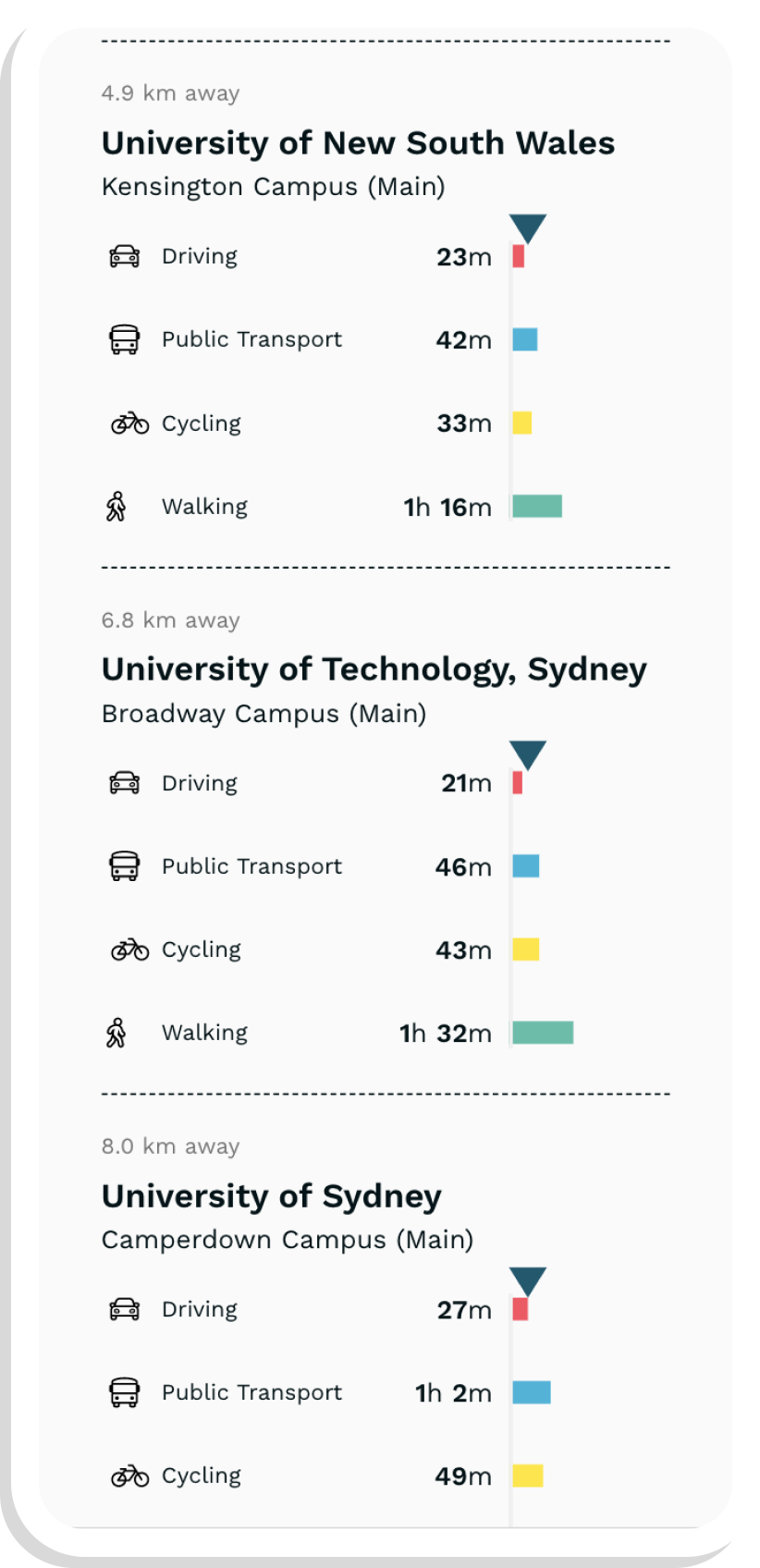
Choosing a degree by University ranking
The third data visualisation that Degree Chooser includes in the user experience is a university’s position in three well-known, world-wide university rankings. These are the Quacquarelli Symonds world university rankings (QS), the Academic Ranking of World Universities (ARWU), and the Times Higher Education world university rankings (THE).
36 universities are depicted, and the user interface design enables the user to see each listed according to their average position across these three university rankings, as well as by their position in each ranking.
For example, if a user clicks on the University of Sydney ranking, then Degree Chooser shows a university ranking of 54th overall, as well as 42nd in the QS university ranking, 74th in the ARWU and 60th in THE.

Meanwhile, the Deakin University ranking is 268th overall, plus 271st in the QS university ranking, 201st-300th in the ARWU and 301st-350th in the THE.
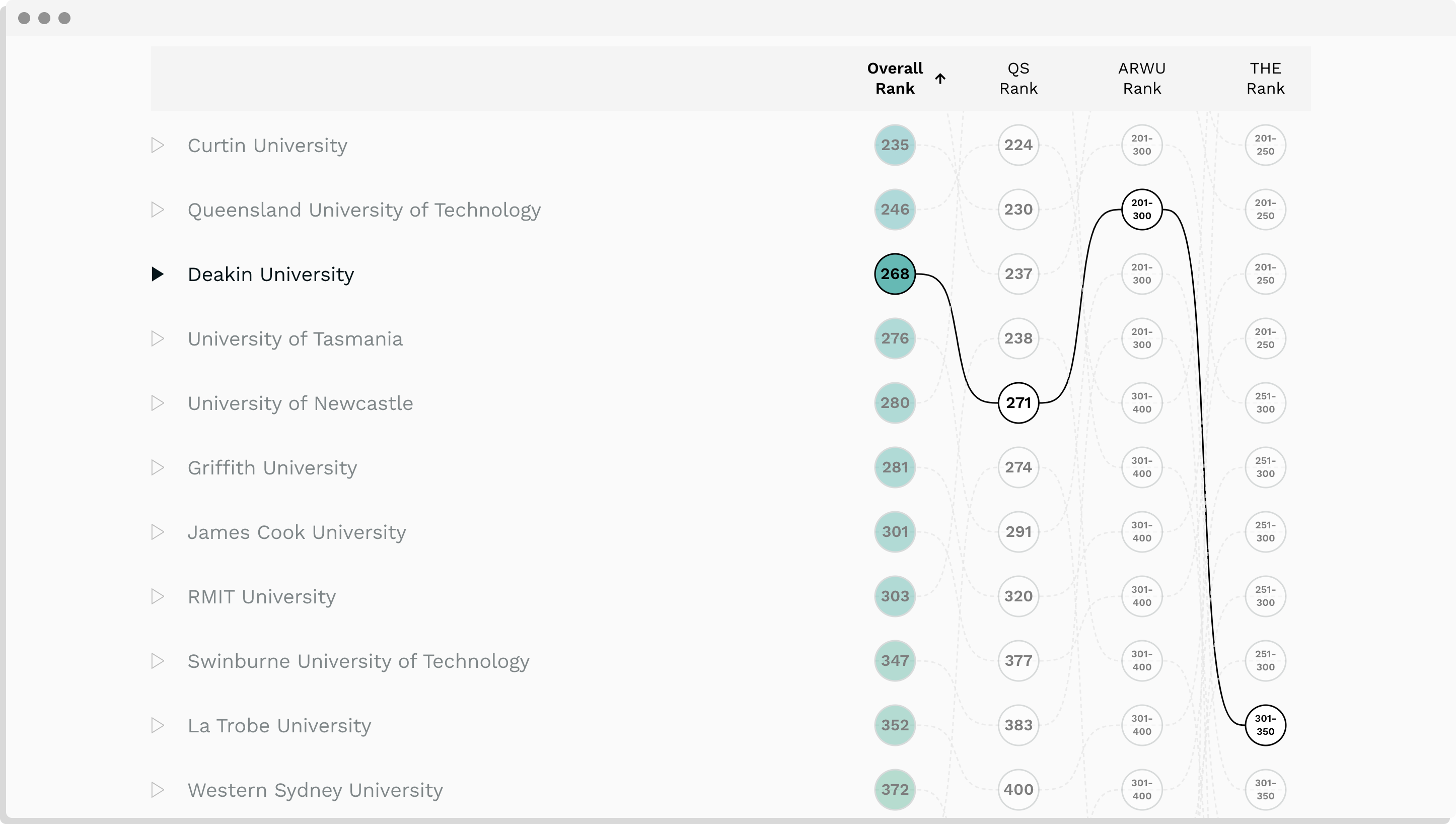
Easy to access
Degree Chooser is featured on the Universities Admissions Centre (UAC) website, where a direct link provides a seamless user experience for students making UAC applications. By clicking once, the user travels straight to Degree Chooser, where they can access clear, centralised, well-presented data about UAC courses, to help inform their decisions about UAC preferences.
Further, the Degree Chooser data visualisation tool sits on its own unique website, so it is available to everyone at every stage of the UAC application process—from initial UAC offers to final UAC rounds.
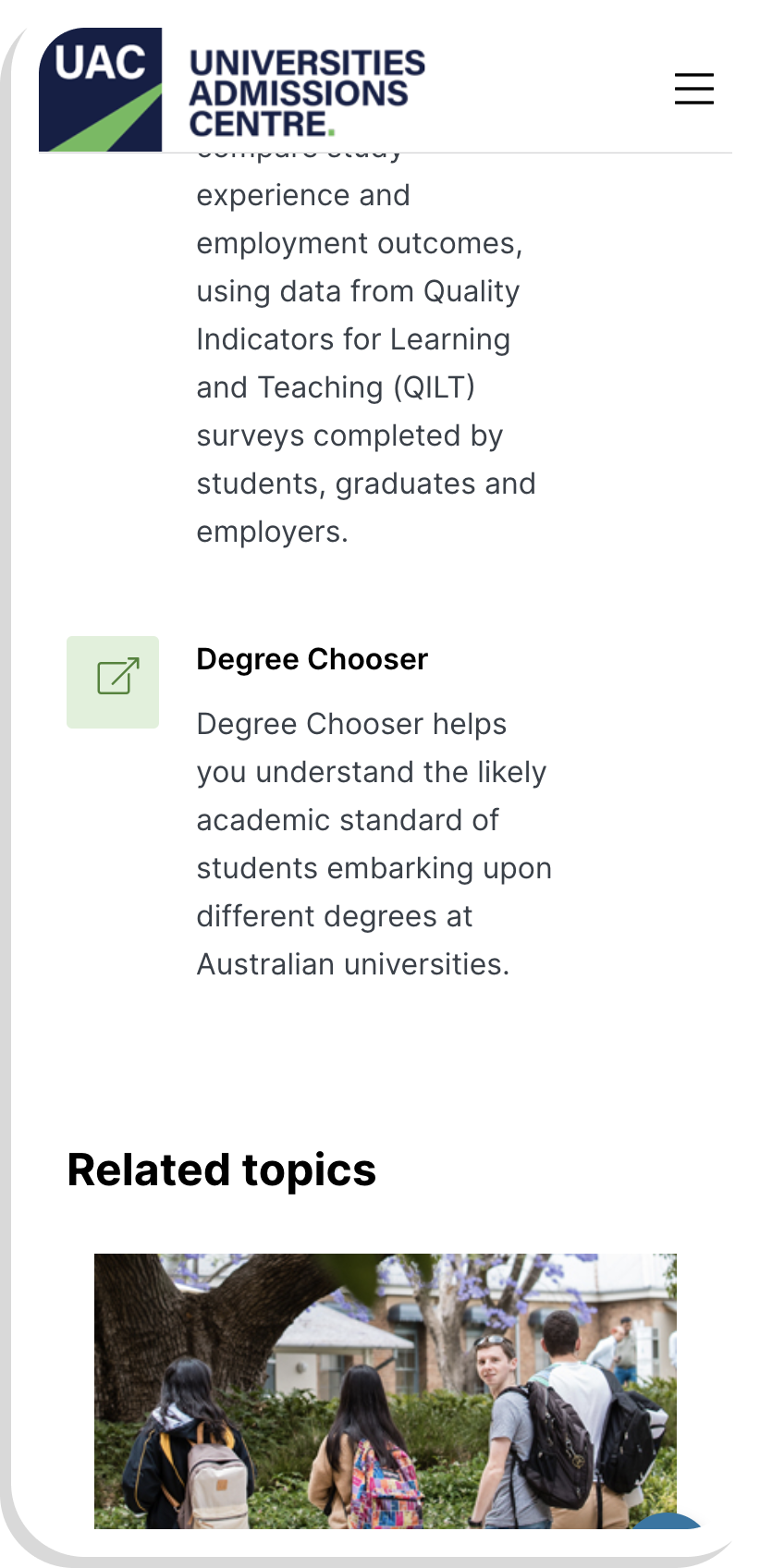
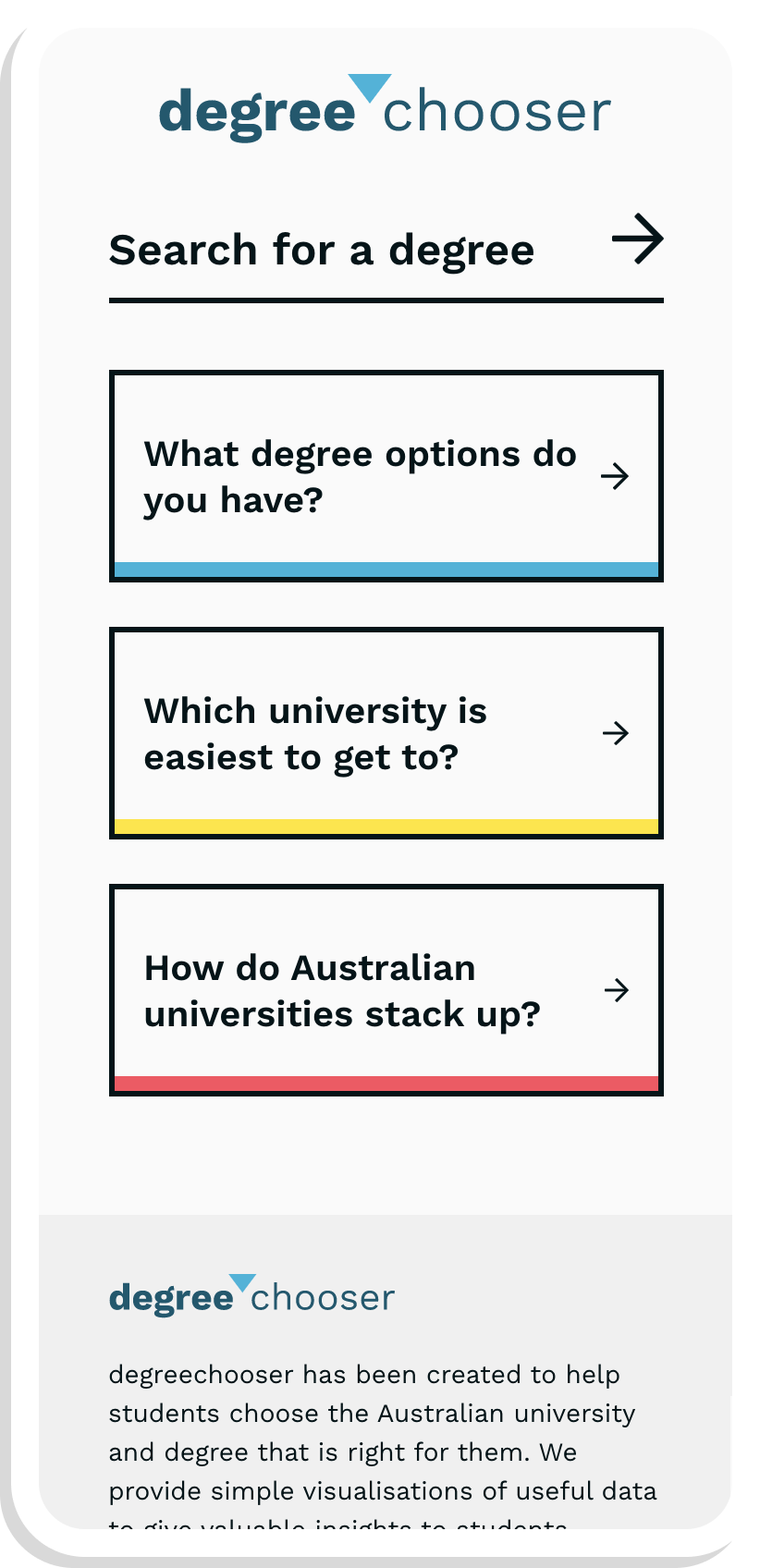
 View All
View All




